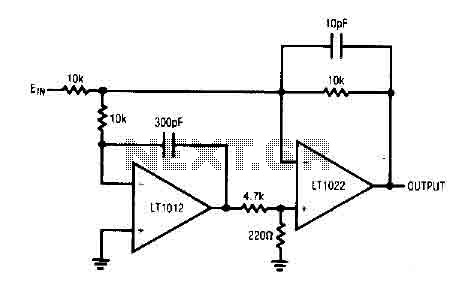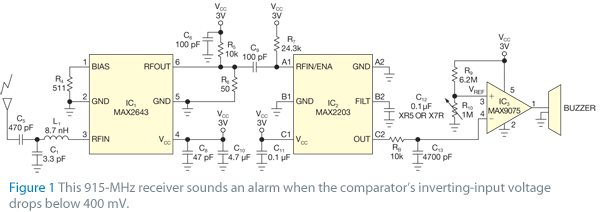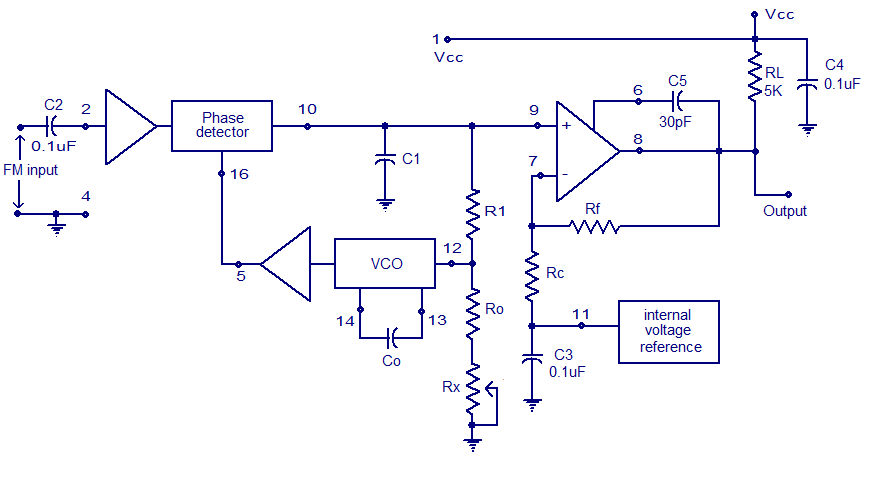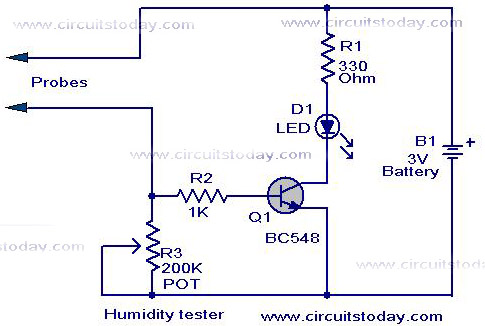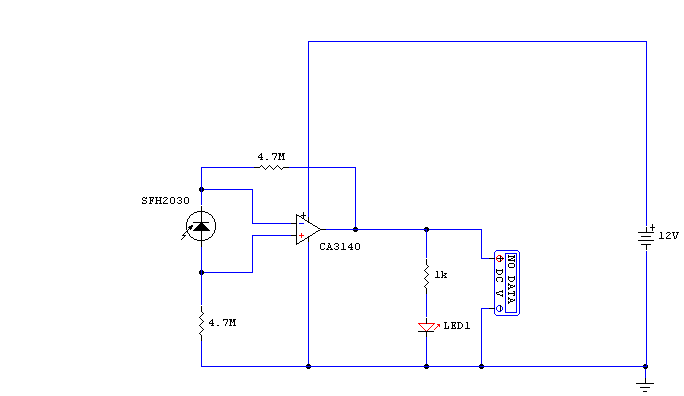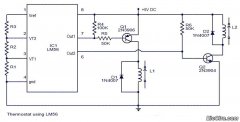
Notch filter circuit diagram MC33171

The trap circuit utilizes a high-performance operational amplifier, MC33171, to create the trap. This device features a wide bandwidth and high conversion rate. The component values can be modified by adjusting the capacitance of capacitor C and the resistance of two resistors R, allowing for changes in the notch frequency, expressed as f = 1/(4RC).
The trap circuit is designed to selectively filter out specific frequencies from a signal while allowing other frequencies to pass through. The MC33171 operational amplifier serves as the core component due to its excellent performance characteristics, including a high slew rate and low noise, which are essential for maintaining signal integrity in high-frequency applications.
In this circuit, the notch frequency can be adjusted by varying the values of the capacitor C and the resistors R. The formula for the notch frequency, f = 1/(4RC), indicates that the frequency response of the circuit is inversely proportional to the product of the resistance and capacitance values. Therefore, increasing the capacitance or resistance will lower the notch frequency, while decreasing these values will raise it.
The design typically consists of a feedback loop that incorporates the operational amplifier, capacitor, and resistors. The configuration ensures that the desired frequency is attenuated while minimizing the impact on adjacent frequencies. The high-performance characteristics of the MC33171 allow for precise tuning and effective filtering, making this trap circuit suitable for applications in audio processing, communication systems, and signal conditioning.
Overall, this trap circuit exemplifies the application of operational amplifiers in electronic filtering, demonstrating how component selection and configuration can be leveraged to achieve specific signal processing goals. As shown for the trap circuit. The circuit uses a high-performance op amp device MC33171 constitute trap. The device has a wide band and a high conversion rate. In the illustra ted component values by changing the value of a capacitor C and two resistors R, and other available notch frequency, its value is: f 1/4 RC.
The trap circuit is designed to selectively filter out specific frequencies from a signal while allowing other frequencies to pass through. The MC33171 operational amplifier serves as the core component due to its excellent performance characteristics, including a high slew rate and low noise, which are essential for maintaining signal integrity in high-frequency applications.
In this circuit, the notch frequency can be adjusted by varying the values of the capacitor C and the resistors R. The formula for the notch frequency, f = 1/(4RC), indicates that the frequency response of the circuit is inversely proportional to the product of the resistance and capacitance values. Therefore, increasing the capacitance or resistance will lower the notch frequency, while decreasing these values will raise it.
The design typically consists of a feedback loop that incorporates the operational amplifier, capacitor, and resistors. The configuration ensures that the desired frequency is attenuated while minimizing the impact on adjacent frequencies. The high-performance characteristics of the MC33171 allow for precise tuning and effective filtering, making this trap circuit suitable for applications in audio processing, communication systems, and signal conditioning.
Overall, this trap circuit exemplifies the application of operational amplifiers in electronic filtering, demonstrating how component selection and configuration can be leveraged to achieve specific signal processing goals. As shown for the trap circuit. The circuit uses a high-performance op amp device MC33171 constitute trap. The device has a wide band and a high conversion rate. In the illustra ted component values by changing the value of a capacitor C and two resistors R, and other available notch frequency, its value is: f 1/4 RC.
